#working cats
Explore tagged Tumblr posts
Text

Tips from a pro
(Working Cats)
6K notes
·
View notes
Text
I've been seeing a lot of Discourse around outdoor cats that talks past one of the biggest problems addressing community cats/outdoor working cats so I thought I'd chime in with my two cents.
Many arguments I see just... don't think about the cats at all? Or don't consider the logistics of actually addressing the feral cat problem in a humane way. It's always about how outdoor cats shouldn't be outdoors, which is neither realistic nor helpful.
I used to volunteer at an municipal animal shelter in the USA that had a TNR program (Trap, Neuter, Return) and also adopted out community cats to local farms and businesses. Here's my side of the story.
"Your cat doesn't need to be outside" -- Yes, correct. Your domesticated (non-feral) house cat does not need to go outside at all. They can have a fully actualized life safely indoors. When I see this argument, proponents of indoor only cats are correct in most or all their arguments regarding this.
"Outdoor cats are the largest invasive species in the world, and decimate bird populations." -- This is also correct, and part of the reason why you can help by bringing your house cat indoors. Cats are the largest invasive species. Spay and Neuter your cats, bring them inside, and socialize them so they don't become feral.
"TNR doesn't work." -- False. Whether we like it or not, feral cats exist. We have two methods by which we can address the feral cat population -- decimating them (humanely euthanizing the whole colony) or TNR. For a long time, euthanasia was the preferred way to address the feral cat problem. Afterall, if the cats aren't there, doesn't that save the local wildlife population?
Except that we found, studying these colonies, that when a colony is wiped out, the cats of another colony will spread into their territory and continue to have kittens and the population of feral cats is neither controlled nor diminished.
Hence, TNR. What we found performing TNR on cat colonies was that this controlled the population of the colonies, allowing them to stay in their territory, which kept other colonies from spreading (especially colonies we hadn't performed TNR on yet). We at the shelter felt this was the most humane way to control the feral cat population and safely deflate their existence without dealing with the population blooms that euthanasia caused.
"What about kittens?" -- Kittens from these colonies were brought into the shelter, socialized, and fostered out until they could be adopted. Some of these semi-feral kittens needed special homes to be adopted into, but this was the best quality of life for these cats.
"What about cats that get missed during TNR?" -- We would return to the colony several times over a period of several years to perform TNR on the same colony. We mark cats that have been neutered by clipping their ear (this is done humanely, but is the most reliable way to tell if a cat has been neutered so the poor thing doesn't have to have surgery 3-4 times in their life). Also, during the TNR process the cats would be vaccinated to ensure disease did not spread from the colony (i.e. rabies). Still, even getting 60% of the colony TNR'd would dramatically reduce the number of kittens being added to the colony each year. This controlled the population by allowing the territory to naturally deflate in size over time, buying us time to address the larger feral cat problem.
"What if the colony was in an unsafe location?" -- There were two ways we addressed unsafe colony locations -- remember, we know that when the colony is removed, a new colony will move into its place, so we tried not to move the colony unless we really felt the cats or the public was unsafe -- one was to move the whole colony to a new location. Preferably someplace like a warehouse where we have an agreement with the owners of the warehouse. Some of the cats were even relocated to shelter grounds as our community cats. If the colony was small enough we would bring them into our Feral Cats room and adopt them out as community cats.
"What is a community cat?" -- The way the program worked, was that anyone who needed a working cat could apply to the program. These were often rural farmers or businesses with warehouses that needed rodent protection. We trained the farmers and businesses on how to acclimatize the cats to their new home, and as part of the agreement, they had to care for the cats (veterinary care, vaccinations, food and water). This gave businesses and farms an alternative to expensive and environmentally unfriendly rodent control, and also gave these feral cats good places to live out their natural lives.
"Can't you just adopt out feral cats?" -- No. Cats that have not been socialized around humans as kittens, or who have several generations of feral cat in them could not interact with humans in a way that did not cause them undue stress. This was not a humane way to handle feral cats. However, when a cat was brought into the feral cat room, they would be monitored for up to a week. If the cat displayed signs of being semi-social or fully social (hanging out outside of their den, allowing staff to pet them, showing interest in staff in the room), then we would either move the cat into the adoption room or place them in foster to be socialized before adoption. Feral cats who displayed signs of being able to live full and healthy lives with human companions were NOT adopted out as community cats. We also observed this behavior during TNRs and would do the same for those cats too.
"But aren't cats bad hunters?" -- Compared to other species, cats are not the most effective form of rodent control. This is true. However, you have to understand that feral cats exist. There is no "undo" button we can push to stop them from existing. We have to deal with the problem we have right now, which is to safely and humanely decrease the number of feral cats in our communities. And yes, we do that by using cats as rodent control in the community.
"What can I do?" -- Stop saying community cats shouldn't exist. That's not helpful and doesn't solve the problem we have. Bring your cat indoors. Spay and neuter your cats. Adopt from shelters. Volunteer with a TNR team. Support TNR efforts in your community. Recognize that those of us actively dealing with the community/feral problem are trying to do what is in the best interest of our communities and the animals we love. We aren't sitting over here saying these cats should exist -- a feral cat will not have the same quality of life as one that is indoors with a family -- but we have to address the problem in practical terms. We don't have the moral high ground to just do nothing while pontificating solutions that have no basis in actuality.
And yes, it's okay to celebrate community cats. If your local farm has a couple of working cats, that means that farm is helping participate in the safe deflation of the feral cat population. Don't shame a farm or business for using community cats. We're all doing the best we can to solve the problem that we have.
7K notes
·
View notes
Text

after morning chores nap..
207 notes
·
View notes
Text

"I'm talking to your manager"
#cute kitty#cats of tumblr#funny cats#working cats#meiga#catblr#petblr#kittyposting#she looks like a Karen
19 notes
·
View notes
Text
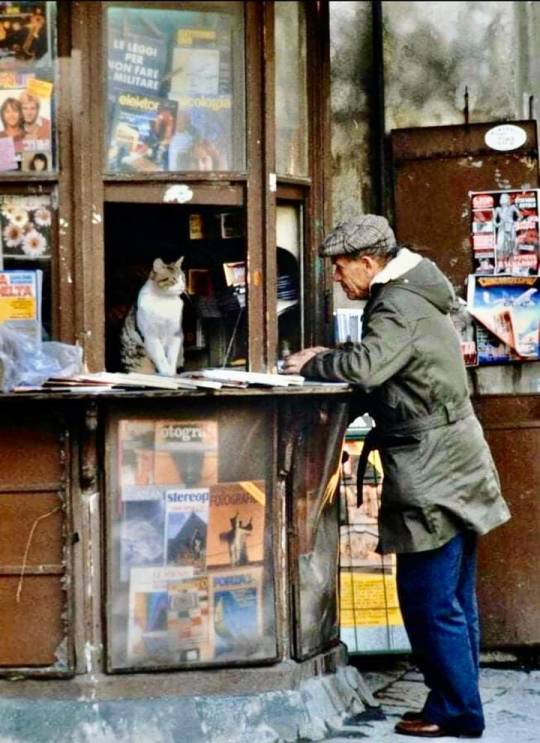
#artwork#comics#funny#funny image#cat#cats#work#worker cats#working cats#magazine#old photo#oldtimes#old web#cat tumblr#today on tumblr#today cat#today on cats#kitty cat#kitty#cats pics#cats and humans#memes#may day#may day cat#newspaper#newspaper cat
24 notes
·
View notes
Text

This 14th-century door at Exeter Cathedral, UK, is thought to be the oldest existing cat flap. A cat was paid a penny each week, to keep down the rats and mice in the north tower, and a cat flap was cut into the door below the astronomical clock to allow the cat to carry out its duties. Records of payments were entered in the Cathedral archives from 1305 to 1467, the penny a week being enough to buy food to supplement a heavy diet of rodents.

2 notes
·
View notes
Text

Elvis Mousebane, who hath eaten all his (mouse) killing.
#elvis mousebane#black cat#black cats#cats of tumblr#disabled cats#mouser#working cats#cats with jobs#elvis mousebane killer of mice
2 notes
·
View notes
Text
I fucking love this omg
Absolutely losing it at this Reddit post
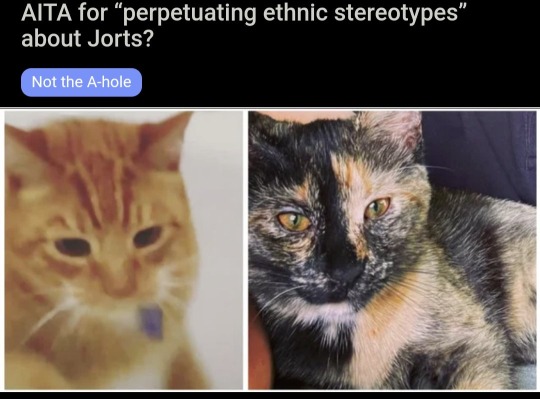
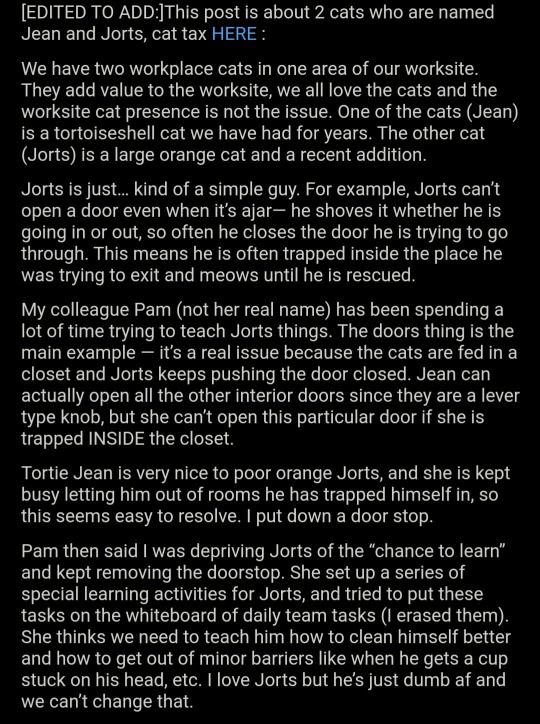
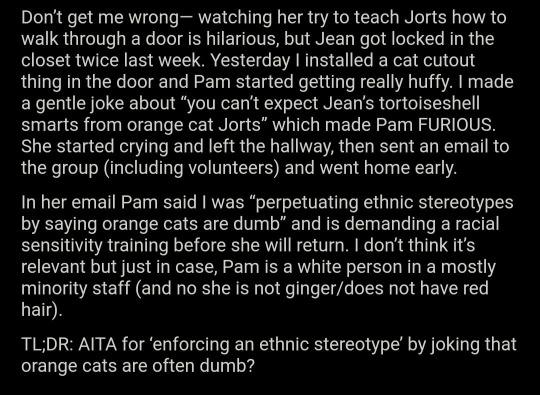
And the update
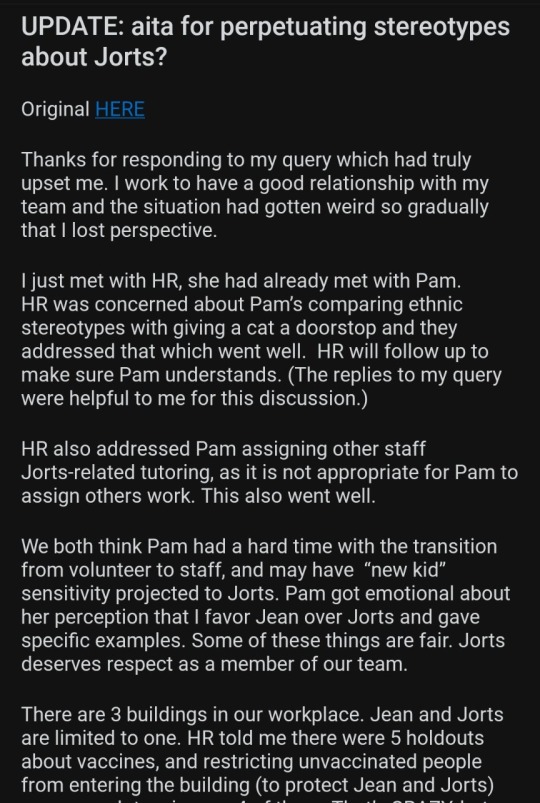
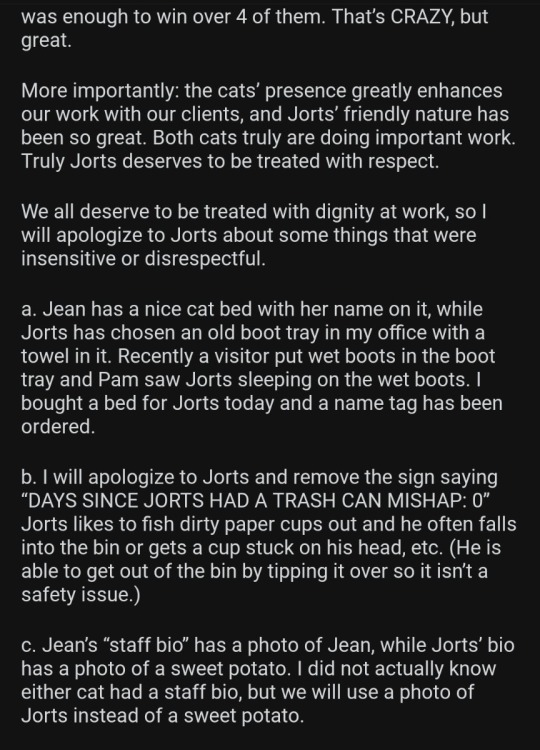

She buttered Jorts
#‘pam is not allowed to apply margarine to any of her coworkers’#jorts the cat#Jean and jorts#cats#workplace cats#working cats#Reddit#aita reddit#funny#hilarious
211K notes
·
View notes
Text
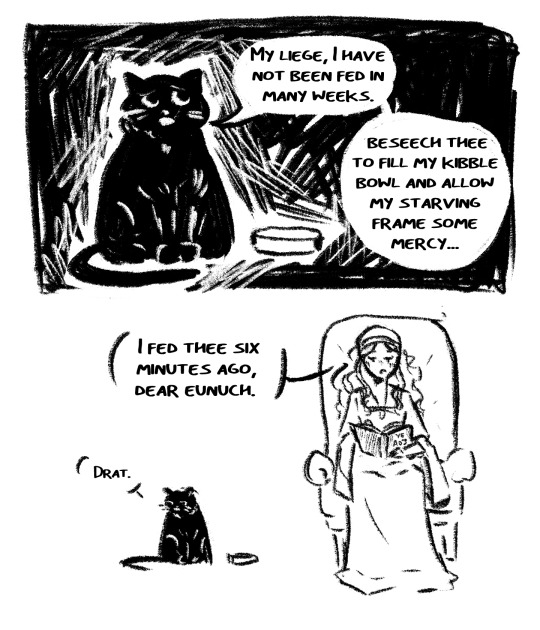
i love my cat but he is very fond of trickery
#cats#lady normalgirl and her eunuch#i think the name’s gonna stick i was talking to my friend (who we joke is my tumblr manager)#and apparently one of the first things i said when we met (abt 3 years ago) was “im a normal girl” so. lady normalgirl works LOL#10k#20k#my doods#30k
32K notes
·
View notes
Text

The duty of a cat
(Working Cats)
416 notes
·
View notes
Text
shaking my head while playing neko atsume so people know that I don’t support outdoor cats
#I heard they made neko atsume 2 and I couldn’t decide which I wanted so I downloaded both#the nice thing is that 1 comes with a watch app so I can easily check if there are new cats without pulling out my phone#great for when I go to pee at work and realize I left my phone but still wanna procrastinate#but 2 you can visit other people’s yards???
19K notes
·
View notes
Text

supple-MENTAL am I right-
I love how fast Jon spiraled between seasons
#his face is not ideal here#not exactly how I see it in my mind#gotta work more on his design me thinks#he gotta look more like a wet cat#tma#tma fanart#tma season one#tma season two#the magnus archives#the magnus archives fanart#tma podcast#jonathan sims#golswia art#golswia#SPIRALed#u see what i did there-
19K notes
·
View notes
Text
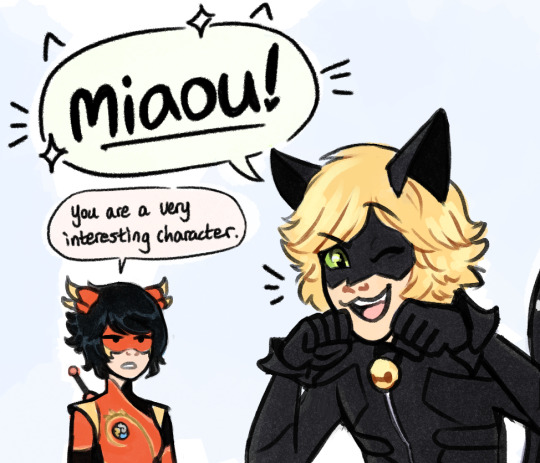
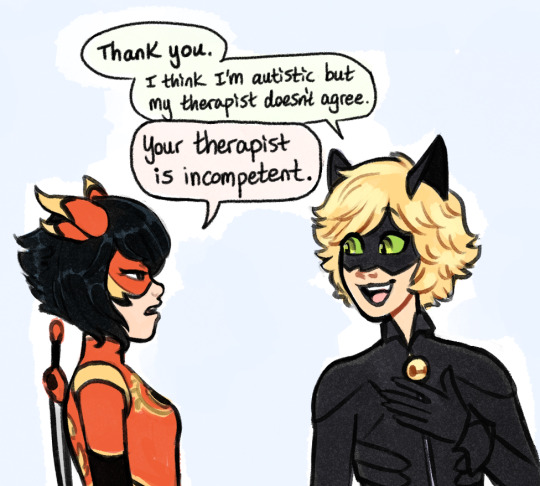
blame @mari-monsta for this
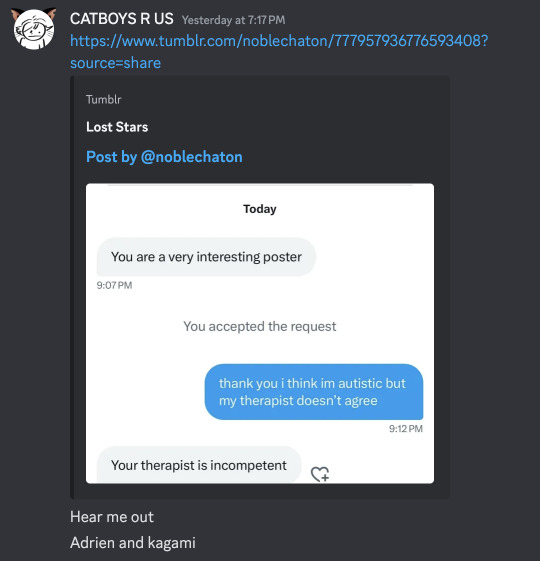
(the post)
#ml#miraculous ladybug#miraculous#chat noir#cat noir#ryuko#adrien agreste#kagami tsurugi#my art#this was a great little thing to get my drawing mojo working again
8K notes
·
View notes
Text
new tumblr game. put in the tags a GENUINE flaw your fav(s) has. cant be something like "too kind" or "loves too much" like something genuinely bad messed up morally wrong they are or have done
#ashie rambles#warrior cats#warriors#<- can work for other fandoms too idgaf#for me ummm. nightheart is selfish and impulsive#ashfur is...ashfur#fernclouds kind of boring#hollyleaf is horribly woobified by the fandom
21K notes
·
View notes
Text


new guy in the Express
bonus:
adding more to the whimsy

#so i have to be forward with this after all the xiao spree these past 2 years i was close to None feeling interested to doing hsr art#until now LMAO#primary reason being: sunday#like i swear he used to be annoying as a villain but there's something so sad and cute about how he's changed until he boarded the AE#it altered my entire brain chemistry#so anyway i'm actually not supposed to post online until i have work done but#courtesy to anon when i was merely visiting my acc for a bit on that bowtie cat proposal... this is for u to rb <3 await the other post too#sunday hsr#march 7th#trailblazer#dan heng#AE quartet#yes absolutely that needs to be a tag#qiiarts#honkai star rail#hsr
11K notes
·
View notes